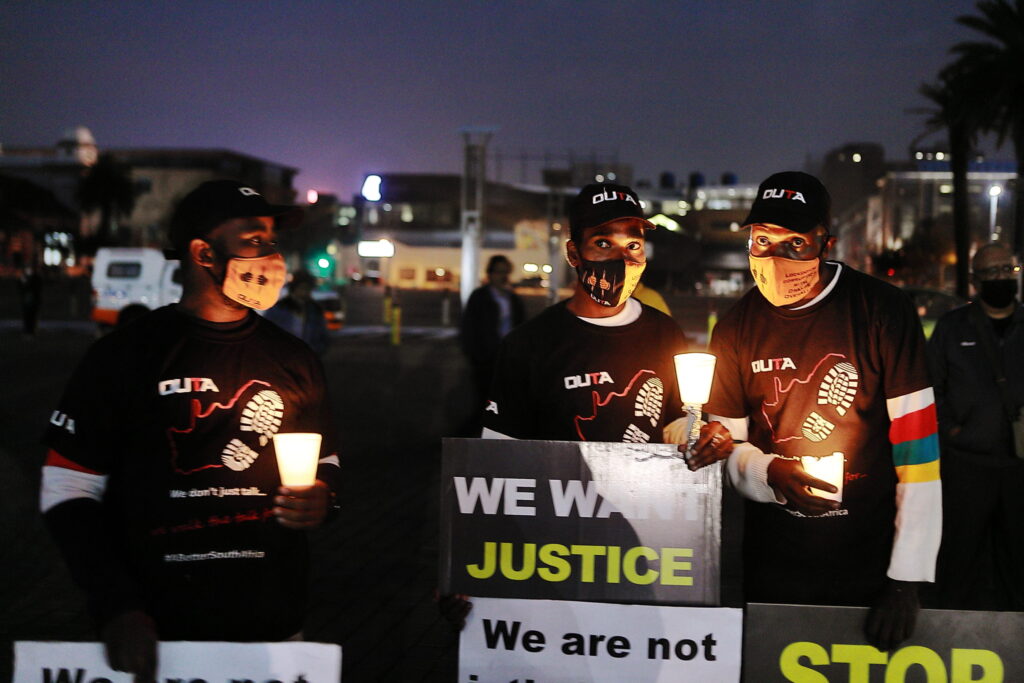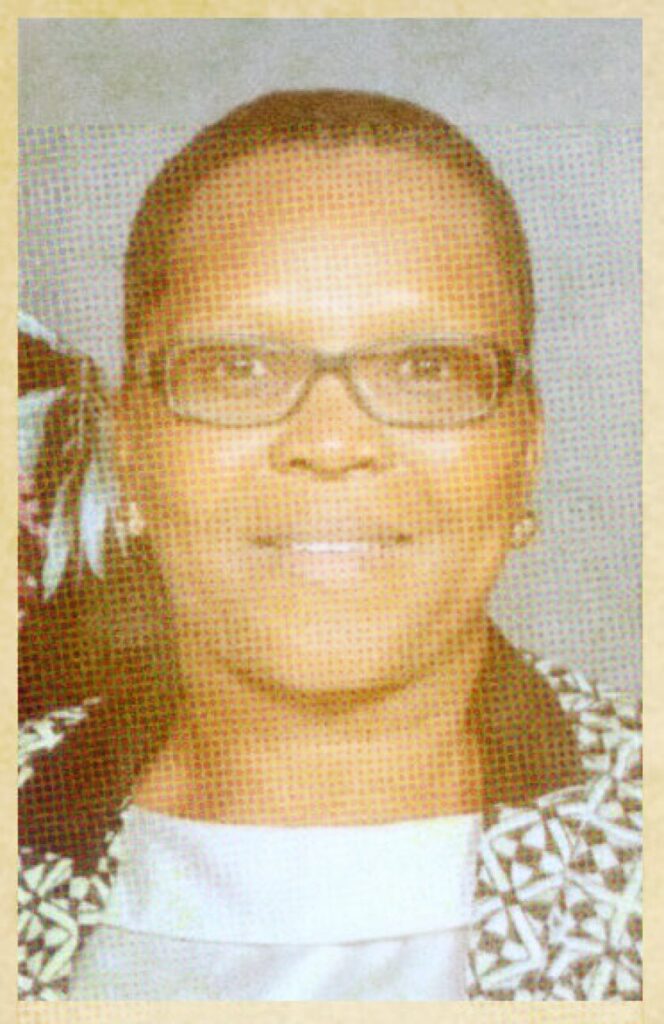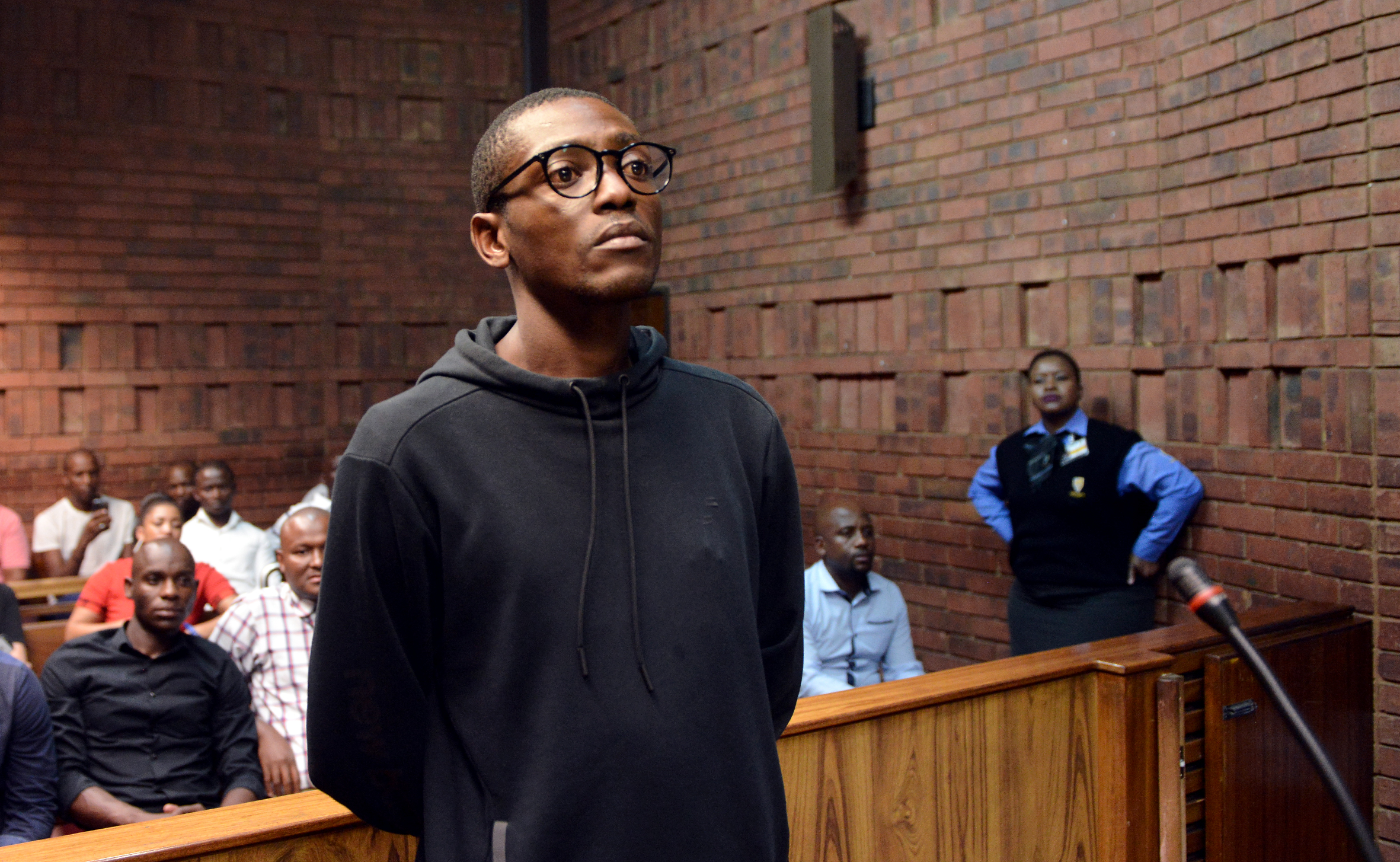
Over the past few years, Americans have become increasingly polarized, having trouble even simply talking to each other and agreeing on basic facts. A 2020 study revealed that the polarization gap — how negatively members of opposing political parties viewed each other — soared by nearly 70 percent.
In this issue, Nieman Reports explores how newsrooms are advancing political coverage that considers voters rather than just vote-seekers, explores divisions without oversimplifying or overstating them, and identifies not only the existence of problems but possible solutions — a practice that in turn makes the reporting more useful and even more accurate.
A few days before last November's municipal elections in South Africa, local politician Siyabonga Mkhize was murdered. He was gunned down as he went door-to-door talking to his constituents in the neighborhood of Cato Crest. He was with three other people, one of whom was also killed.
Mkhize, a ward councillor candidate with the African National Congress party, was elected posthumously to the Ward 101 seat. However, his murder resulted in a by-election for the ward, and Mzimuni “Mzi” Ngiba won the position, which he held between 2016 and 2021.
In May of this year, Ngiba was arrested for allegedly murdering Mkhize, the man he replaced. Three others were also arrested in connection with the death.
This murder plot was covered by the press while I was investigating another assassination in the area. That’s how common the phenomenon is becoming.
According to data by the Global Initiative Against Transnational Organized Crime (GI-TOC), assassinations in South Africa are on the rise. Between 2000 and 2020, there were more than 1,800 assassinations — 858 of which happened in the last five years, the initiative’s research shows. That means that in the six years between 2015 and 2020 almost the same number of assassinations happened as during the period between 2000 and 2015. But coverage of these killings has lagged.
This is understandable, says Julian Rademeyer, a journalist and director of the Organized Crime Observatory for East and Southern Africa at GI-TOC, noting that his organization has found that after coverage of the initial murder these stories are often forgotten. “The media space in South Africa has shrunk with smaller newsrooms, smaller budgets, and little local and rural coverage. That means that in a province like KwaZulu-Natal [where Mkhize was killed], there is very little follow-up coverage.”
There has been media coverage but, given the scale of the crisis, it has been superficial, Rademeyer adds. “The practice of taking a story and running with it over time has gone. We need to document this violence in a way that forces action,” he says. “There needs to be constant pressure on a set of politicians that are mostly out of touch with their citizens.”
That vigilance could come at a cost to the personal safety of journalists and their families and any whistleblowers who come forward to provide crucial information in the reporting process. Journalists around the world are increasingly under threat of harassment and detention — and in some cases of being tortured or killed — and most news outlets don’t have the resources to adequately protect them. It’s imperative that we consider their safety as we advocate for more coverage of potentially dangerous topics. The Committee to Protect Journalists’ annual Global Impunity Index states that “Somalia remains the world’s worst country for unsolved killings of journalists.” And, according to the same research, no one has been held accountable in 81 percent of cases worldwide where a journalist was murdered between 2011 and 2021.
With regards to my own safety, covering assassinations has made me hypervigilant when it comes to covering every story, no matter what the topic. Even if there isn’t an assassination featured in my story, I’ve become aware that certain actors can still use a contract killing, part of the economy of violence in South Africa, as an instrument to silence me.

“Effectively it is about risk versus reward,” says Colin Pereira, chief strategist on journalist safety for the Committee to Protect Journalists. “Whenever you are dealing with people who have no respect for human life, like assassins, and also when there is money involved (even if the amount is relatively small) and you threaten that money supply or their reputations, then the risk is immense. As a journalist, you need to always do this analysis of the risk in advance.”
Pereira says that journalists often get focused to such an extent on their stories that even if they know the risks, they will ignore them or convince themselves that those risks do not apply to them. When you calculate the risk, you need to think about the impact your reporting has on your life and your family, Pereira stresses. CPJ suggests investing “time in understanding the security implications of your topic; identifying the major actors and learning their motivations.” And be clear about whether you want to be identified. Skip the byline if the story will be appearing in a publication that is seen as an adversary to the state.
One organization devoted to keeping journalists safe is Periodistas de a Pie, a Mexican collaborative that seeks to elevate the quality of the country’s journalism through trainings, networking building, and sharing resources. In addition to training up journalists in investigative techniques, reporting strategies, and other technical skills, Periodistas de a Pie also addresses the personal needs of journalists at a time when systemic violence is on the rise by offering support in self-care, security, and other coping and protection measures.
Maxime Koami Domegni, a reporter originally from Togo but who now works from Senegal, has covered apparent political assassinations in the past, including that of former minister, journalist, and president of the Movement for National Development political party, Atsutsè Kokouvi Agbobli, who was discovered dead on a beach in August 2008. “Official reports indicated that he committed suicide by drowning, after escaping from a hospital,” says Domegni. “But there were many contradictions around his death. I wrote about this in 2019. We still had to be extremely cautious, and very few people would accept talking about it.” Agbobli’s son revealed to Domegni that his father was planning to run as a candidate in the next presidential election. “In a country where hundreds have been killed for political reasons, under the same regime, some stories are particularly sensitive. Even 10 years after the fact,” says Domegni.
Some 400 to 500 people were killed and thousands injured in Togo after the sudden death of its long-time president, Gnassingbé Eyadéma, in February 2005, and the subsequent disputed presidential elections in April. “Victims have filed complaints in court. But none of them have been investigated. Even the Economic Community of West African States (ECOWAS) Court of Justice condemned the Togolese state for denying the victims fair justice,” says Domegni, whoargues that journalists should consider most of these deaths as assassinations: “Many of them have been targeted for being opposition activists and killed purposely.”
Families often don’t differentiate when their loved ones are killed in traditional hits or targeted mass killings. Journalists should cover both in their reporting, according to Domegni.
One way to keep journalists safe when reporting on assassinations, Domegni advises, is to report on the ground in the country you are covering and then do the production work and publishing outside the country. This gives the journalist some extra protection, but also helps to make sure the story itself can’t be quashed. Several Russian newsrooms, for example, have reconstituted themselves outside the country in the wake of Vladimir Putin’s invasion of Ukraine and criminalization of accurate reporting on the war. Domegni stresses that a pipeline is essential to extract journalists from their countries if necessary.
“Extraction is a very complicated process,” says Pereira. “First, the threat needs to be verified as genuine,” and an assessment carried out to determine if the individual can be relocated within the country or if a complete extraction is necessary. Will the family accompany them? Will it be permanent or temporary? “The question of funding the extraction and long-term support of the individual and family is crucial,” he says.
“It is also about creating journalism practices that tangibly prioritize the people, rather than profit. Press freedom needs to adapt and be as tactical and relentless as its attackers”
— Ruona J. Meyer, chair of the board at Alibi Investigations
Domegni suggests creating a “shadow network” of journalists that would be willing to take over working on stories in case the original journalists are deported or worse. “I would opt for virtual shadowing because this will mean there is no physical surveillance possible,” says Ruona J. Meyer, chair of the board at Alibi Investigations, a non-profit investigative unit and training center in Johannesburg I founded that helps African journalists produce investigative podcasts, as well as an Emmy-nominated, multimedia investigative journalist and consultant originally from Nigeria. This would create a sense that even an assassination wouldn’t extinguish the story, and the coverage would endure regardless.
Indeed, organizations like Forbidden Stories, whose tagline is “Killing the journalist won’t kill the story,” already do this kind of work. Forbidden Stories completes and publishes the investigations of journalists who can no longer pursue their projects due to threats, imprisonment, or murder. After a journalist in danger submits their initial reporting, Forbidden Stories collaborates with both local and international media outlets to continue the journalist’s investigation. The goal, according to Forbidden Stories’ mission statement, is to show press freedom enemies that “even if you succeed in stopping a single messenger, you will not stop the message.”
Creating shadow networks of journalists takes “power away from those who harm or harass and deport journalists,” says Meyer. “It provides real protection for the journalist because they can even leave before they are forced to. They know a shadow will take over. It is also about creating journalism practices that tangibly prioritize the people, rather than profit. Press freedom needs to adapt and be as tactical and relentless as its attackers.”
When done right, stories about assassination get to the people behind the murder — not just the person or people responsible for the actual killing. I did a podcast series over a year ago called “Too Many Enemies” that looked at the assassination of wealthy South African businessman Wandile Bozwana. A host of hitmen were arrested for the crime, and four were recently convicted of murder. But no arrest of “the mastermind” has been made.
In my reporting I have found disgruntled police officers to be the best source of information when looking for a mastermind. In South Africa, it is common practice for a police officer to be moved off a case when he or she gets too close to solving it, if higher ups don’t want a conclusion. This can leave the officer despondent and eager to talk, at least anonymously.
It’s also imperative to remember that the people who are feeding you information are taking a risk in talking with you — whether they are a source for a story about assassinations or a whistleblower on a major investigation. The Platform to Protect Whistleblowers in Africa, an organization that defends whistleblowers and deploys lawyers to help litigate on their behalf, argues that whistleblowers need a strong, independent media to counteract weak political systems. “But media has a tendency to fight for the story and not necessarily the whistleblower, whose person becomes the evidence they require,” says investigative journalist and PPLAAF board member Khadija Sharife. “If the media house is not careful, their electronic or physical paper trail could expose the whistleblower,” which could put them at risk of assassination.
South Africa has benefited hugely from whistleblowers coming forward in the last few years to expose government corruption. But with assassinations escalating — and becoming prominent in public spaces — protection is becoming more difficult to offer.

In early June 2022, two men walked into a fancy eatery in Johannesburg’s suburb of Rosebank, a neighborhood of glossy malls and high-rise apartments, and opened fire on a customer named Jason Lambe. The victim was a businessman who, according to police, was armed but had no time to reach for his gun as he sat waiting for a breakfast takeaway at 10:00 on a Thursday morning. One of the last major news reports on the killing was also back in June, when one of Lambe’s business associates came forward “looking for answers.” This assassination completely ruptures the idea in South Africa that crime can’t reach certain affluent areas.
However, the news cycle quickly moved on. As a journalist in a country with a rising assassination rate, you have to prioritize stories you have the resources to cover — and that resonate most strongly with your audience, though this is a bias that should be examined like any other.
News24, a large South African news site, has remained focused on the assassination of civil servant Babita Deokaran, a corruption whistleblower who worked for the Gauteng Department of Health. Though she was assassinated in 2021, News24 has persisted in covering the case, releasing stories as recently as August 2022.
The first story revealed how Deokaran tried to stop almost $6 million in suspicious payments and flagged nearly $50 million in other suspicious transactions at the Gauteng Department of Health just days before she was killed. She even confided in colleagues that her investigating could result in her death.
While Deokaran suspected that her work could lead to her assassination, it isn’t always so obvious to the potential victim. Priscilla Mchunu was a 54-year-old acting principal when she was assassinated in 2017 in the surrounds of Pietermaritzburg, a city not far from Durban in the province of KwaZulu-Natal. She was gunned down while teaching her high school history class. An entire class of Laduma High students watched her being murdered, while she stood at the blackboard. Years later, no arrests have been made.
I investigated this case for the second series of our podcast Alibi and uncovered that Mchunu may have been the victim of a contract killing because of her appointment as acting principal, as this put her in a position to be next in line for the top job of principal. The case completely shattered me because Mchunu wasn’t a politician or conducting business deals; she was a high school teacher who had done nothing to warrant being a target.
This assassination also affected me because those involved — particularly the students who had witnessed the murder — were still suffering from the trauma. My story followed a father and son team from the community who had endeavoured to solve the crime themselves. The father was a cop and would unofficially bring headshots home to his son, who had witnessed the murder, to examine. The son would point to the ones he thought looked like the assassins as they were spread out on the dining room table.
Beyond the quick newspaper article written when the murder happened, few journalists followed the story. The father and son thought that they were on their own and were grateful when I arrived. But there was a risk to me. I was trailed, warned, and told to leave town.
But these stories are so important, not just so justice can be served but so those who knew the victims can see them properly recognized. The power of journalism I have witnessed — through my assassination reporting — is that often the loved ones think that the world has forgotten and moved on to the next story. You have a chance to prove them wrong and show them that society — in some form — still cares.



